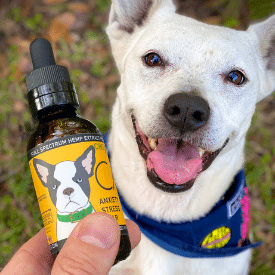The Endocannabinoid System

The endocannabinoid system, or ECS, is a cell-signaling system (you’ll hear a lot about receptors) that was found via research in the early 1990’s.
A study published by Pharmacol. Rev. explained the identification of cannabinoid receptors in the body has “triggered an exponential growth of studies exploring the endocannabinoid system and its regulatory functions in health and disease.” The study went on to state “in the past decade, the endocannabinoid system has been implicated in a growing number of physiological functions, both in the central and peripheral nervous systems and in peripheral organs.”
Research has highlighted the therapeutic role the endocannabinoid system plays in regard to mood disorders, anxiety, movement disorders like Parkinson’s disease, neuropathy, cancer, atherosclerosis, spinal cord injury, stroke, myocardial infarction (heart attack), glaucoma, obesity, and osteoporosis.
Researchers still have a long way to go, and a lot to learn, but what they have discovered thus far is remarkable.
Table of Contents
What we know About The ECS
We know now the ECS is responsible for a large range of processes in the body including (but not limited to): sleep, mood, memory, reproduction, and appetite. The Endocannabinoid System is also responsible for:
- appetite and digestion
- metabolism
- chronic pain
- inflammation and other immune system responses
- mood
- learning and memory
- motor control
- sleep
- cardiovascular system function
- muscle formation
- bone remodeling and growth
- liver function
- reproductive system function
- stress
- skin and nerve function
One of the main reasons so many areas of the body are affected by the ECS is due to its ability to increase communication within and between the body’s systems and restore something called homeostasis.
Homeostasis
Homeostasis is a balance within your body. Basically, it means if your body strays away from its normal, it will be brought back. Homeostasis keeps everything in the body stable and working as effectively as possible. If your dog’s body temperature is too high, homeostasis will work hard to bring her body temperature back to normal. When you’re hungry, your stomach begins to make odd noises. It’s telling you it’s time to eat. Without food, you can become drowsy, get a stomach ache, etc. Those are consequences of not permitting your body to return to homeostasis. Once you eat, homeostasis is content and will continue business as usual.
How does the Endocannabinoid System work?
When talking about the ECS, you’ll hear a few terms on a regular basis. The terms will be endocannabinoids, receptors, and enzymes. These three components play critical roles in the ECS.
Cannabinoids
Cannabinoids are molecules produced by the body as well as plants in nature, which interact with the ECS. The body naturally produces ‘endocannabinoids’ that bind to cannabinoid receptors ‘waking up’ the systems within your dog. Similarly, exogenous cannabinoids produced by plants like the cannabis plant look to the body like it’s own native cannabinoids. Basically, nature has designed compounds that mimic chemicals already present in the body! How cool is that?!
Endogenous Cannabinoids
There are two main endocannabinoids (endogenous cannabinoids) that are focused on in scientific studies; anandamide (N-aracidonoylethanolamine or AEA) and 2-AG (2-ArachidonoylGlycerol). Both of these endocannabinoids are produced on an as-needed basis.
- AEA is known as the ‘bliss’ or ‘joy’ molecule. Anandamide is the receptor responsible for the therapeutic use of 9-Tetrahydrocannabinol (THC). And, it’s particularly important because it was the first endocannabinoid to be discovered from the pig brain by William Devane and his team of researchers in 1992.
- 2-AG is present at high levels in the central nervous system and has been identified within breastmilk in humans. 2-Arachidonoylglycerol (2-AG) was the second endocannabinoid to be identified when it was isolated from within a rat’s brain and the gut of a canine.
Since these two endocannabinoids have been discovered, numerous studies have been conducted to demonstrate not only differences in behavior, but also differences within molecules. The discovery of these two major compounds led to the identification of what is now known as the endocannabinoid system.
Exogenous Cannabinoids
Exogenous cannabinoids, like THC, are cannabinoids that are not made by the human body naturally. They mimic our naturally synthesized cannabinoids and are similar in chemical structure, but use a different pathway (receptors) to relay information to produce physiological effects.
Receptors
There are receptors all throughout the body that interact with both endogenous and exogenous cannabinoids, like hemp. (yes, in your dog’s body and your own).Cannabinoids bind to receptors, a bit like a puzzle piece, to communicate what they would like to say. There are two main endocannabinoid receptors.
CB1 Receptors
CB1 receptors, first found in 1988, are commonly found in the central nervous system. It’s not limited to the CNS, though. It has been found in other areas of the body, but it’s concentrated in high numbers in the brain (neocortex, hippocampus, basal ganglia, amygdala, striatum, cerebellum, and hypothalamus).
Where are they found?
Since CB1 is found in high concentrations in major areas of the brain, research leads us to believe this receptor affects learning and memory, decision-making skills, motor responses, sensory processing, and emotional responses. Scientists remain unsure how to enhance the effects of the CB1 receptor, but have found conditions including chronic pain, anxiety, and wasting syndrome (chemo/AIDS-related in many cases) utilize the endocannabinoid system to their benefit by activating CB1.
You’ll hear of people using cannabis to ‘self-medicate’ to reduce their anxiety. This works because CB1 has been activated by the cannabis plant.
CB2 Receptors
Where are they found?
CB2 receptors are often found in immune cells and other portions of the peripheral nervous system. In a study conducted by the Department of Veterinary Medical Sciences, University of Bologna, Bologna, Italy, dogs were found to have a substantial amount of receptors in their endocannabinoid system, specifically in the spine, which allows dogs to more effectively use hemp. Research has found dogs have more receptors than other mammals which is why they have particular sensitivity to hemp oil.
Enzymes
If you’re like most, you probably haven’t heard about enzymes since high school. That’s perfectly understandable, that’s what we are here for.
Enzymes are used to help the body create endocannabinoids. And, are also responsible for breaking down endocannabinoids once they are done being used. 2-AG and Anandamide, for example, are both degraded by enzymes in the body.
Endocannabinoid Deficiency
Since the discovery of the ECS, there have been discoveries of ECS deficiencies. There are actually conditions that arise when the endocannabinoid system isn’t working properly. Scientifically, this is known as endocannabinoid deficiency, or CECD. The following are conditions that are associated with ECS imbalance:
- Fibromyalgia: linked to the central nervous system, the peripheral nervous system, the endocrine system, the immune system, and the digestive system, pain throughout the body, nausea, depression, difficulty thinking or concentrating, diarrhea, constipation
- Migraines: differences have been found in cerebrospinal fluid anandamide level (endocannabinoid levels)
- IBS
All three of the above conditions have commonalities:
- Enhanced levels of pain with a lack of endocannabinoids found within tissue
- Negative diagnostic tests
- High levels of anxiety and depression
- Patients are generally diagnosed with all three rather than just one single diagnosis; they are put under an ‘umbrella’ diagnosis
Although these three have been the most researched in regard to endocannabinoid deficiency, others are being monitored due to the lack of endocannabinoids in patients. These conditions include:
- Cystic fibrosis
- Neonatal failure to thrive
- Phantom limb pain
- PTSD
- Miscarriages (repeatedly)
- Bipolar disease
Scientists are still researching how endocannabinoid deficiencies can be remedied. Research into hemp and other Cannabis applications will continue to be conducted.
Balance
Basically, endocannabinoids and the ECS system are responsible for keeping your pet’s body and it’s various systems in balance. (homeostasis). If there is something wrong or some type of imbalance in your pet’s body, the compounds found in a full spectrum hemp extract help trigger the right response which will allow the body to heal itself. Naturally.
The endocannabinoid system has great potential. When cannabinoids are introduced into the Endocannabinoid System, it helps bring balance to the bodies of pets with cancer, seizures, and inflammatory bowel disease, nausea, and pain. Exogenous cannabinoids can also be used to inhibit side effects related to cancer treatments (radiotherapy, chemotherapy).
With more research being conducted every day, there are numerous advances in cannabis science being made in regard to how the endocannabinoid system can maximize its power. Due to its non-psychotropic characteristics, hemp has been a main focus. Aiming toward therapeutic applications is the goal to help as many people and animals as possible. It only goes up from here!
About Angela Ardolino

Angela Ardolino is a holistic pet expert who has been caring for animals for over 20 years and operates a rescue farm, Fire Flake Farm, in Florida. She is also the owner of Beautify the Beast, a natural pet salon and shop. After getting her certificate in Medical Hemp Biology and Therapeutic use from the University of Vermont School of Medicine, she founded Hemp Dog Health to provide high quality, all-natural medical hemp products designed specifically for pets. Angela has seven dogs, Odie a 12-year-old mini-schnauzer, Nina an 8-year-old Doberman. Jolene a 7-year-old mutt, Maza a 7-year-old mutt, Rhemi an 8-year-old poodle, Potato a 15-year-old shih-tzu, and Miss Daisie a 15-year-old black lab, plus 4-10 more at any time she is fostering or boarding. She uses Full Spectrum Hemp Extract on all her pets at her rescue farm every day, and has since 2016. She is a member of the Society of hemp Clinicians, the Veterinary Hemp Association and has trained hundreds of medical doctors and veterinarians about the therapeutic uses of medical hemp on animals. Visit www.angelaardolino.com for more information.













